Google Pixel 9 vs Pixel 7: The Pinnacle of Pixel Evolution
We may earn a commission if you make a purchase from the links on this page.

Intro
Google's Pixel 9 is here to spearhead the company's flagship effort heading into a mature AI era, and those who have been using the somewhat aging Pixel 7 might honestly be wondering if the time is ripe for an upgrade.
And rightly so! Aside from a new design and a faster Tensor chip, the new device has many other draws. For example, did you know that next year will be the last time the Pixel 7 will officially receive a major Android update? Yes, any talk about upgrades is totally not out of the question here!
How does the Pixel 9 fare against the Pixel 7, and exactly how much better is this new phone? Let's find out!
Pixel 9 vs Pixel 7 differences:
| Pixel 9 | Pixel 7 |
|---|---|
| A visual redesign, with a flat style | A standard and easy-going design, reminiscent of the Pixel 6 |
| Ultrasonic fingerprint scanner (faster and more accurate) | Optical fingerprint scanner (much slower and less accurate) |
| Tensor G4 (4nm) on board | Powered by the Tensor G2 (4nm) |
| 12GB of RAM | 8GB of RAM |
| 50MP main and 48MP ultra-wide cameras | 50MP main and 12MP ultra-wide cameras |
| Wi-Fi 7 (faster data speeds) | W-Fi 6 (slower data speeds) |
| Some $100 pricier, $799 | $699 starting price |
| Seven years of software updates (Until August 2031) | One more year of software support (Until October 2025) |
Read more:
- Google Pixel 9 release date predictions, price, specs, and expected upgrades
- Google Pixel 8 review: doing things the Google way
- Google Pixel 9 vs Google Pixel 8: There's an unsurprising winner
- Pixel 9a vs Pixel 9 preliminary comparison: Immense value meets unbeatable price tag
- Google Pixel 9a vs Pixel 8a preliminary comparison: Google might be turning things up to eleven!
Design and Size
Two years' worth of change
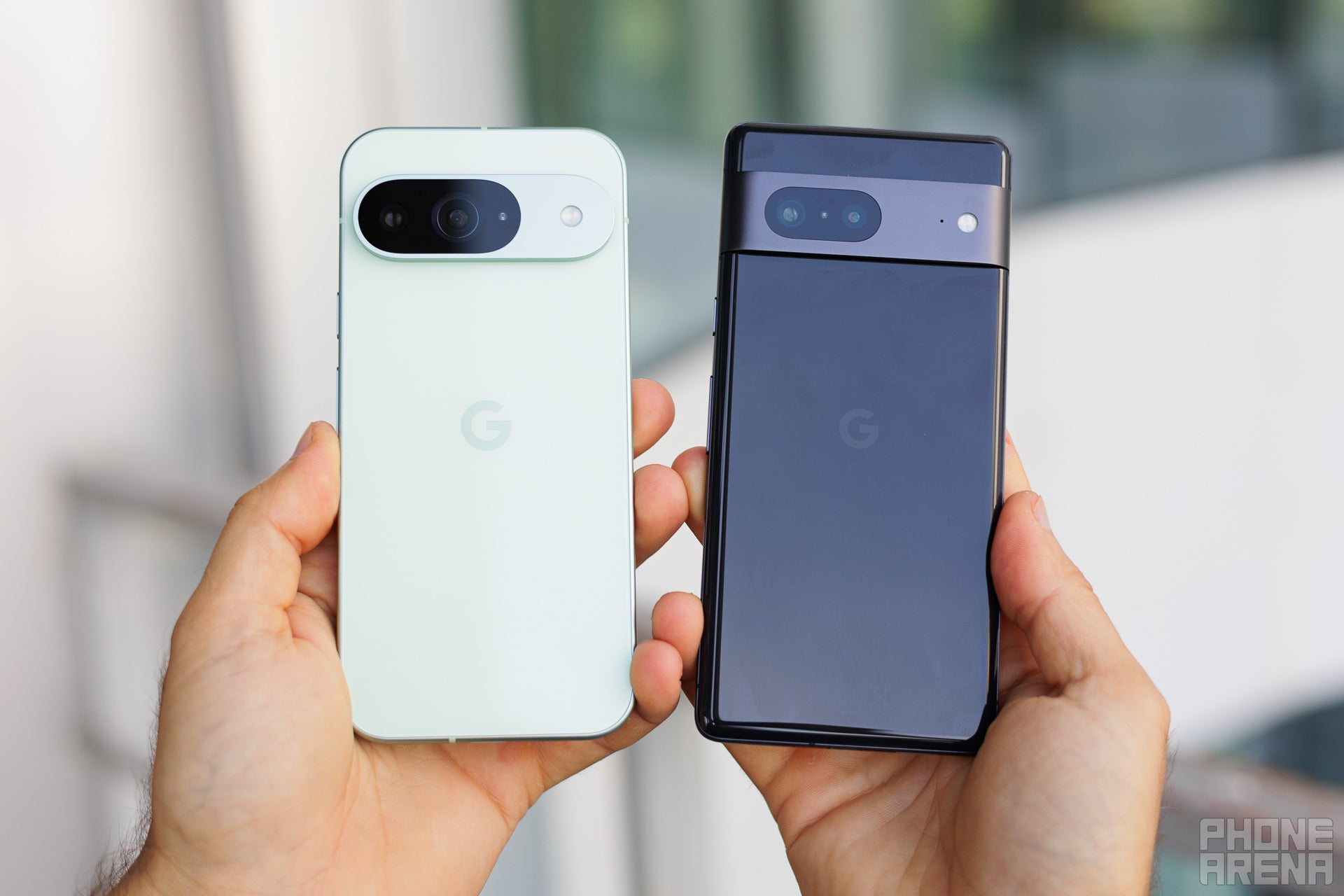
Pixel 9 definitely feels like substantially different (Image by PhoneArena)
The Pixel 9 comes with a refreshed design language: gone is the slightly curved frame of previous Pixels, as the new device has a much flatter design, similar to the latest iPhones and Galaxies. We like this design language, but it's objectively true that it usually hurts the overall ergonomics due to caving into the skin of the palm.
Google hasn't moved away from aluminum for something like titanium or stainless steel. The side frame is matte one, whereas the glass at the rear is polished for a distinct contrast-y look. That's similar to previous Pixel phones.
The two devices are similarly sized, as the Pixel 9's display is in the same ballpark as the Pixel 7. Both have similar dimensions and weight, so aside from the overarching design language, not much is different between the two devices.
There's a notable change at the back of the Pixel 9––the rear camera island is no longer connected to the side frame. That's a very drastic change that breaks away from the design language that previous Pixels employed.
There's a notable change at the back of the Pixel 9––the rear camera island is no longer connected to the side frame. That's a very drastic change that breaks away from the design language that previous Pixels employed.
Meanwhile, the Pixel 7 has that curved aluminum frame that feels pleasingly ergonomic. There's the iconic 3D Visor camera strip at the back, which has been a signature Pixel feature for years.
The Pixel 9 and Pixel 7 have IP68 water and dust resistance. This means you can go into fresh water up to 1.5 meters deep for 30 minutes, and also be completely protected against dust. The flagship standard these days, so business as usual.
In terms of colors, the Pixel 9 is available in Porcelain, Obsidian, Wintergreen, and Peony. The Pixel 7, on the other hand, was available in Snow, Lemongrass, and Obsidian colors.
Display Differences
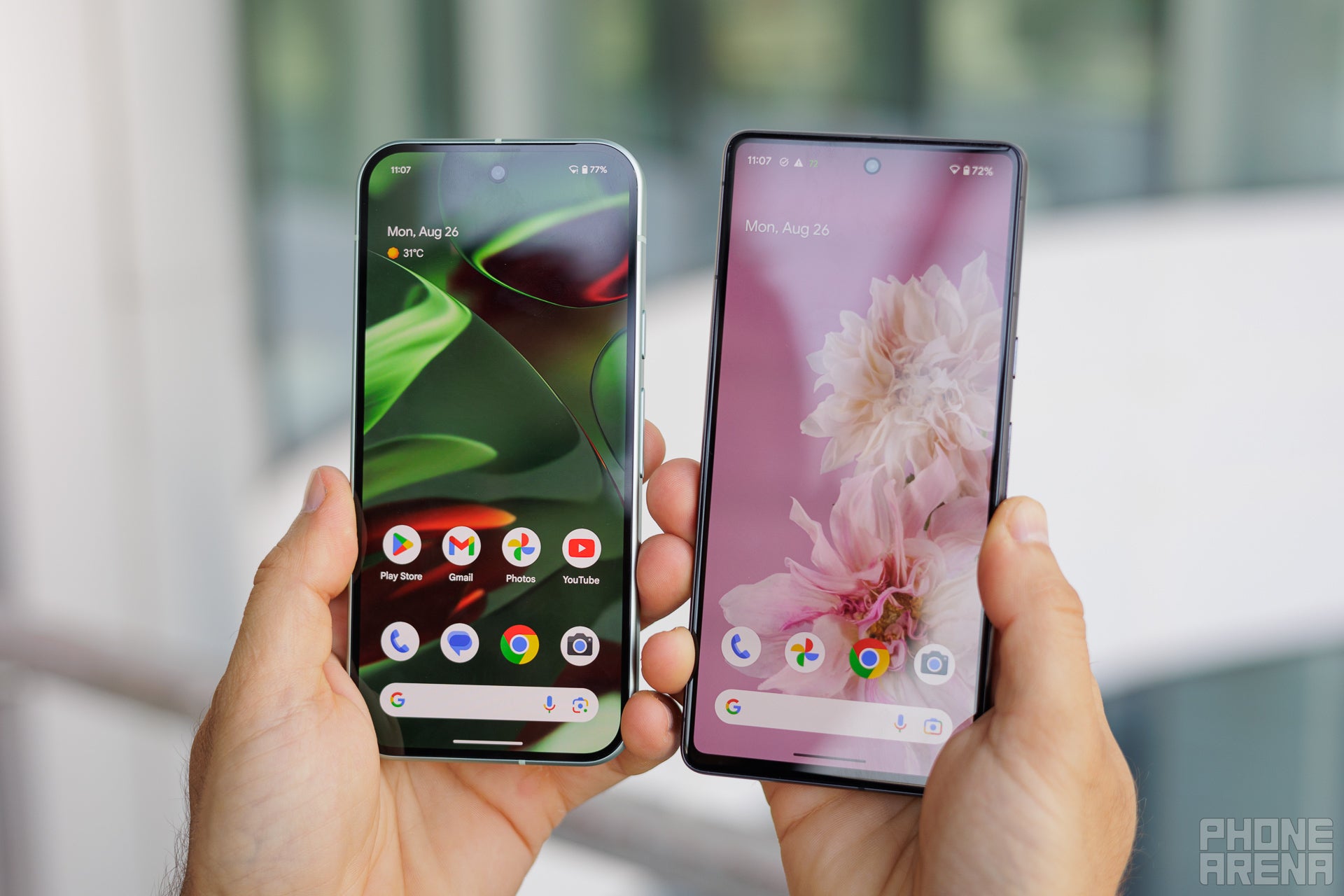
The Pixel 9 has a much brighter display (Image by PhoneArena)
After a brief stint with a 6.2-inch screen on the Pixel 8, the Pixel 9 brings back the same 6.3-inch display from the Pixel 7 days. Same in size only, as there are many improvements on board.
The new Actua screen is still an FHD+ OLED, but is much smoother (ranging between 60 and 120Hz), as well as much brighter, with a peak brightness of 2,700 nits, which leaves the Pixel 7 in the dim, literally and figuratively. Seems impressive on paper, surely.
In our tests, the Pixel 9 boasts a much superior display. It can hit a significantly higher peak brightness––2623 vs 1182 nits, which is what you'd call a night-and-day difference. The rest of the display test results are mostly similar, with similar display temperature and overall color accuracy.
The Pixel 9 comes with an ultrasonic fingerprint scanner, while the Pixel 7 has the older and much slower optical variant.
Performance and Software
Faster and newer wins the game
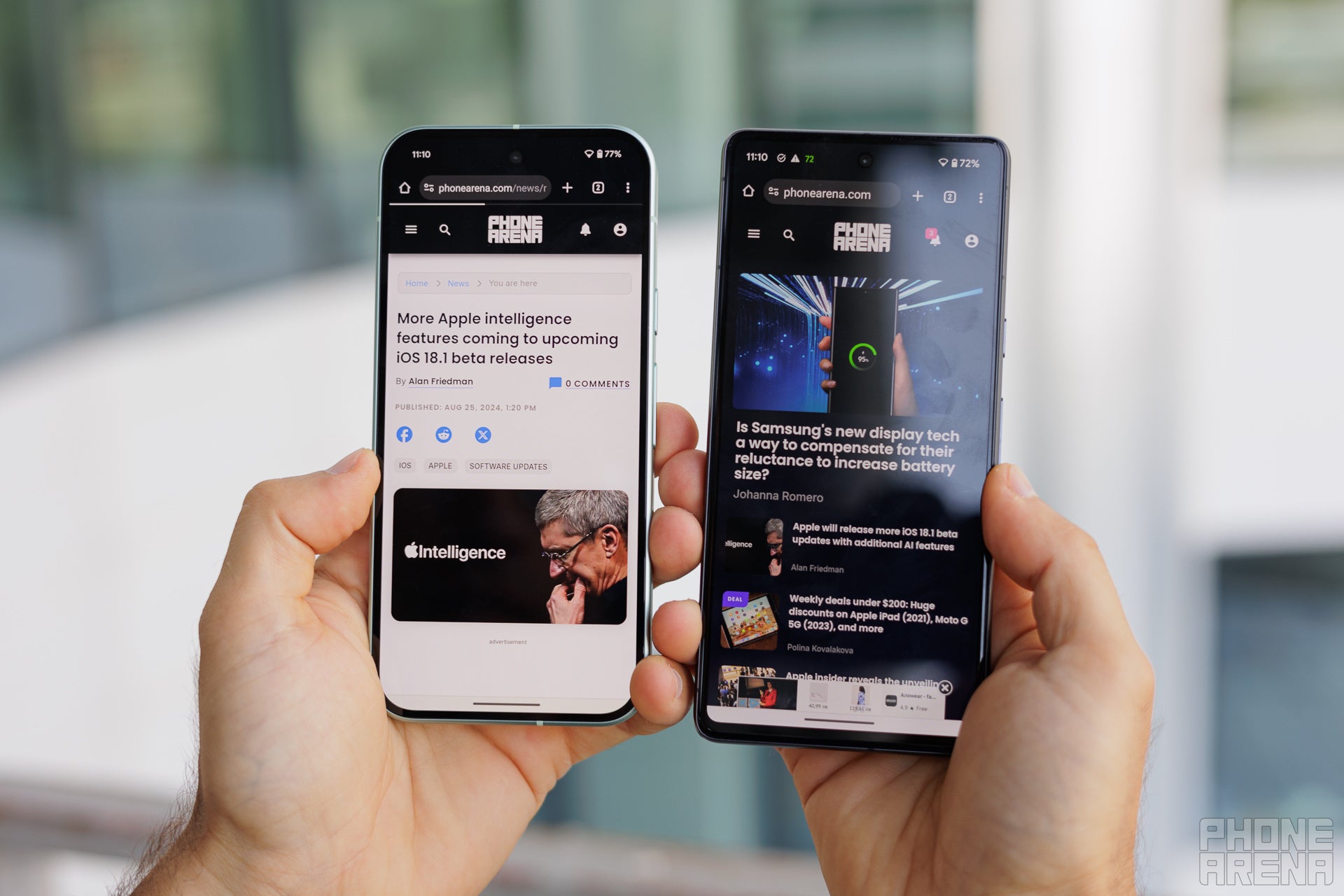
All Pixel 9 phones, including the Pixel 9, employ the 4nm Tensor G4 chipset. The Tensor G4 certainly introduces some modest bump in performance, but if you're expecting a major increase, that's not what the Tensor lineup is. Tensor chips are built with machine-learning and on-device AI in mind, so the performance element is typically secondary in importance.
The Tensor G4 allows the Pixels to run the Gemini Nano multi-modality AI on the device, so complex Gemini prompts will be executed swiftly. Google says this one is the most capable on-device AI model, which is capable of not only understanding text and speech, but also images and audio.
And to boost AI performance, the Pixel 9 comes with 12GB of RAM, as AI is pretty tasking as far as memory goes for those large-language models. Meanwhile, with a way more limited set of mostly cloud-based AI capabilities, the Pixel 7 packs just 8 gigs of memory.
How does the new Pixel 9 fare against the Pixel 7? Well, totally unsurprisingly, the new phone score some great gains on the older Pixel. However, the difference isn't that great. This is attributable to the Tensor being not that focused on intergenerational performance improvements.
The Pixel 9 initially arrived with Android 14, as Google needed some more time to work on Android 15. In late 2024, both the Pixel 9 and Pixel 7 run Android 15, which is. The Pixel 7, on the other hand, currently runs Android 14 and will get Android 15 in the future.
The Pixel 9 will receive Android updates, security updates, and feature drops for seven years until 2030. The Pixel 7, on the other hand, will be supported until 2026.
Camera
New cameras for the new Pixel
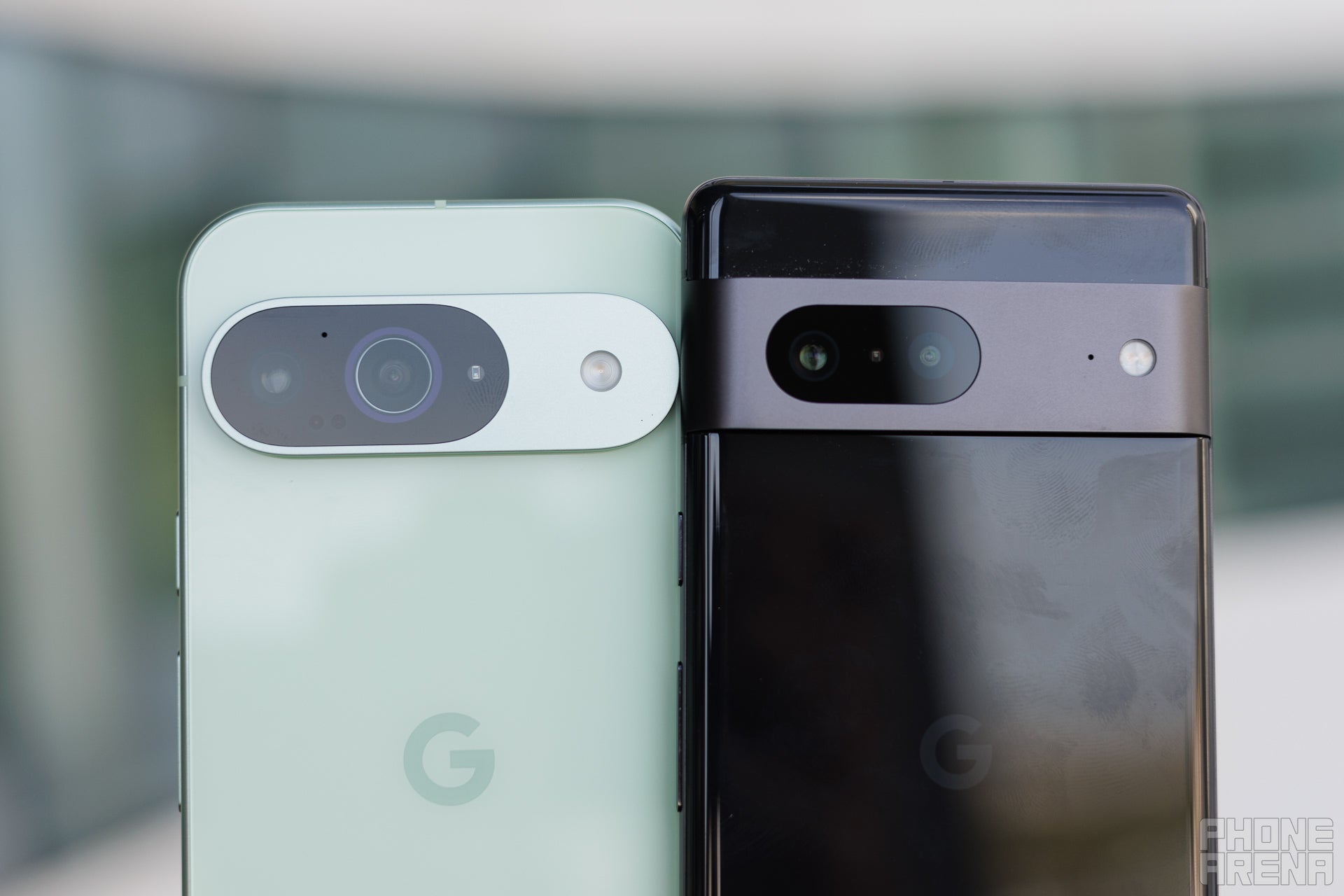
The Pixel 9 is better, but not by much (Image by PhoneArena)
The new Pixel 9 comes with a 50MP main camera, but the exciting bit here is the new 48MP ultra-wide camera, which was inherited from last year's Pro models. With reportedly up to 110% better light sensitivity, it holds the promise for much better low-light sensitivity.
From a hardware standpoint, the main camera is the same one that came with the Pixel 8. It's a 50MP one, with a 1/1.31" sensor and a wide, f/1.68 aperture. At the front of the Pixel 9, we have the same 10.5MP selfie camera as before.
Meanwhile, the Pixel 7 comes with a 50MP F1.9 wide-angle and 12MP ultra-wide cameras.
The hardware might be mostly similar to the Pixel 7, but the beauty of the Pixel is that Google always finds ways to improve the camera quality by software optimization.
Main Camera
In terms of the main camera, the Pixel 9 delivers photos with a warmer color temperature and slightly better details without the noticeable oversharpening of the Pixel 7. The dynamics of the Pixel 7 are slightly better, though, as it squeezes better shadow detail.
At night, both Pixels do a fantastic job. However, we once again notice that the older Pixel actually has better dynamics and captures more information in those pesky shadow areas of the scene, which is crucial for low-light photography scenarios.
Zoom Quality
The 3X zoom level is the only one we'd recommend using, as anything above that fails to deliver truly usable photos with either phone. The significantly warmer color accuracy of the new Pixel phone is obvious here as well, and while the Pixel 7 appears more realistic, we also love the warmer hues that the Pixel 9 delivers.
Ultra-wide camera
The Pixel 9 has some corner sharpness issues with its ultra-wide camera, whereas the Pixel 7 delivers a sharper image. However, it's the newer phone that correctly meets the criteria of an ultra-wide camera. You can capture a much wider scene with the Pixel 9 thanks to its 123-degree field-of-view, whereas the Pixel 7 only captures a 114-degree field-of-view.
Selfies
Selfies are definitely better on the Pixel 9: the better exposure of the subject's face and the warmer, pleasing colors are precisely what one has to look for in a great selfie.
Video

Battery Life and Charging
Changes inbound
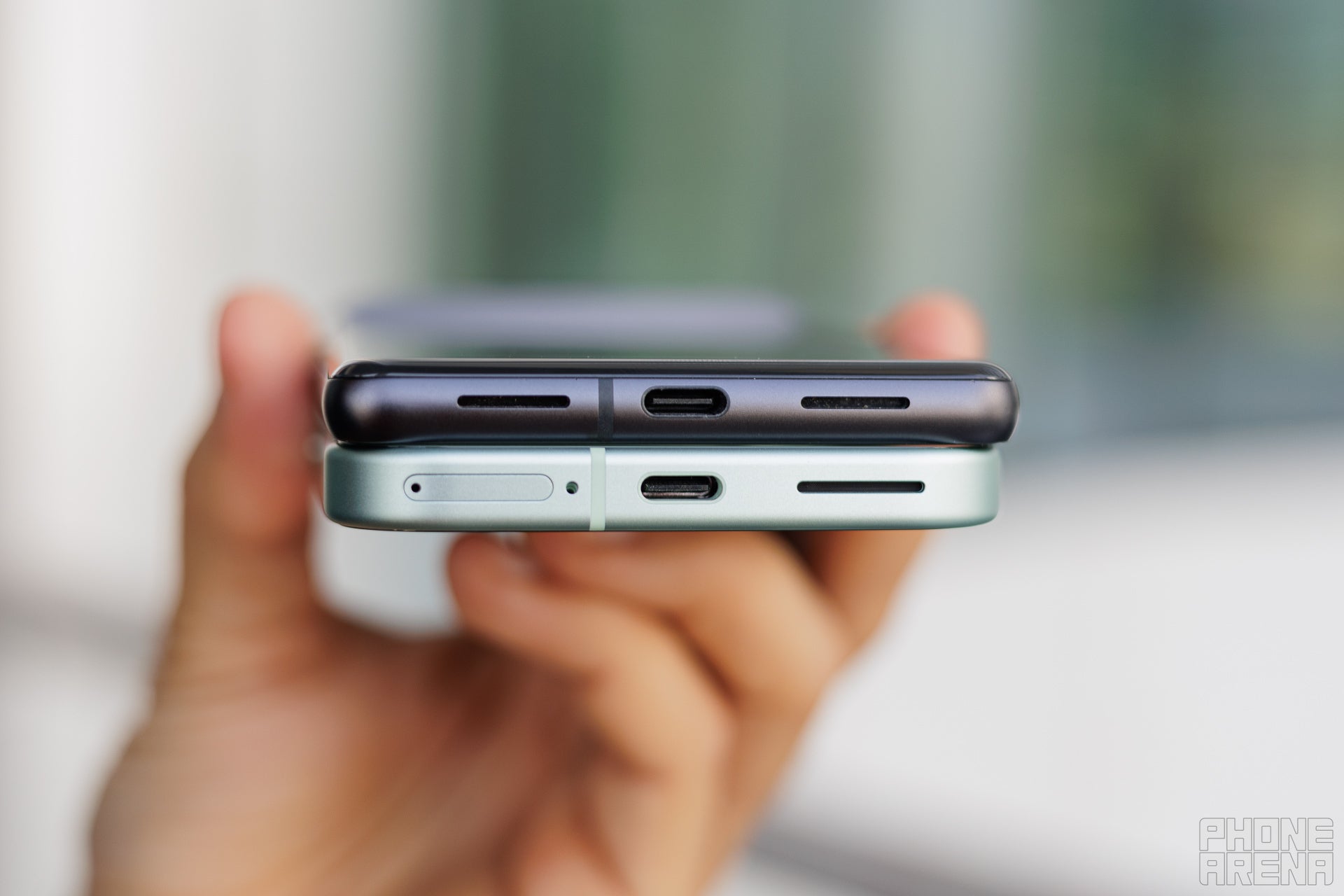
Pixel 9 easily beats the Pixel 7 (Image by PhoneArena)
The Pixel 9 packs a substantial 4,700mAh battery, a larger one than the 4,575mAh battery inside the Pixel 8. We hope that the Pixel 9 will be able to deliver decent battery life with its battery/chipset combo. Google cites a 24-hour battery life, but we are itching to put the new phone through our tests.
The Pixel 7, on the other hand, boasts a significantly smaller 4,355mAh battery on board, with a battery life that was below the average for the category. Last year's Pixel 8 was a step in the right direction, and we surely do hope the Pixel 9 takes a giant stride forward.
In our tests, it's mostly decided in the Pixel 9's favor. The new phone does a much better job in our dedicated browsing test, where it achieves 17 hours and 34 minutes, which is a great result. The Pixel 7 is behind, but still achieves a respectable 14 hours.
The Pixel 7 takes one back in our video streaming test, where it beats the Pixel 9 by nearly 45 minutes. Finally, the Pixel 9 beats the old phone in our 3D gaming test.
Charging-wise, the Pixel 9 scores 27W wired charging, which will be able to top up the phone to 55% in 30 minutes. The Pixel 7 caps out at around 25W wired charging. As per our tests, both charge at a similar rate, in around an hour and forty minutes.
Audio Quality
The Pixel 9 sounds much better than the Pixel 7, with fuller sounds that doesn't distort as much at higher volumes. The sound stage is slightly wider, too.
Haptics are good on both, but they are definitely better on the Pixel 9 as they're more precise and strong.
Specs Comparison
Here's how the Pixel 9 vs Pixel 7 specs will likely compare. Here's how the hat these are still based on preliminary, unofficial specs, so everything regarding the Pixel 9 is subject to change.
Summary
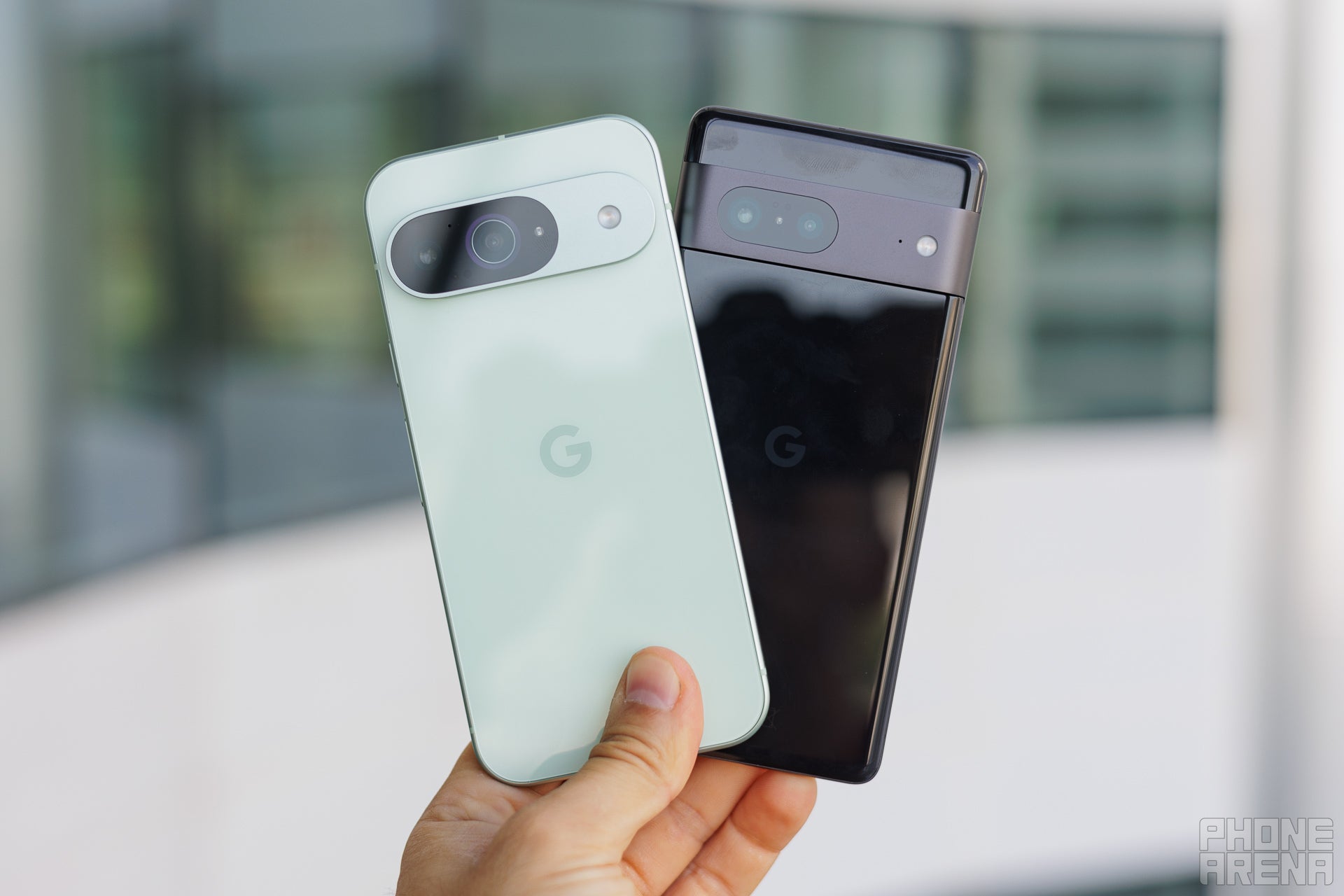
Getting the Pixel 9 is a safe bet (Image by PhoneArena)
Google's most affordable flagship phone is walking the safe path with timely and small improvements here and there. The jump between the Pixel 9 and Pixel 7 is there, but it's not that major.
The Pixel 7 was a good phone in its heyday, but is starting to show its age already, so even if you're satisfied with your device, it would still make sense to consider the Pixel 9 if all the rumors we've discussed above materialize.
With a much longer projected life, better battery life, performance, and camera that will only get better with additional AI features and updates, it's a safe bet to recommend the Pixel 9 to all satisfied Pixel 7 owners out there.
The Pixel 7 was a good phone in its heyday, but is starting to show its age already, so even if you're satisfied with your device, it would still make sense to consider the Pixel 9 if all the rumors we've discussed above materialize.
With a much longer projected life, better battery life, performance, and camera that will only get better with additional AI features and updates, it's a safe bet to recommend the Pixel 9 to all satisfied Pixel 7 owners out there.






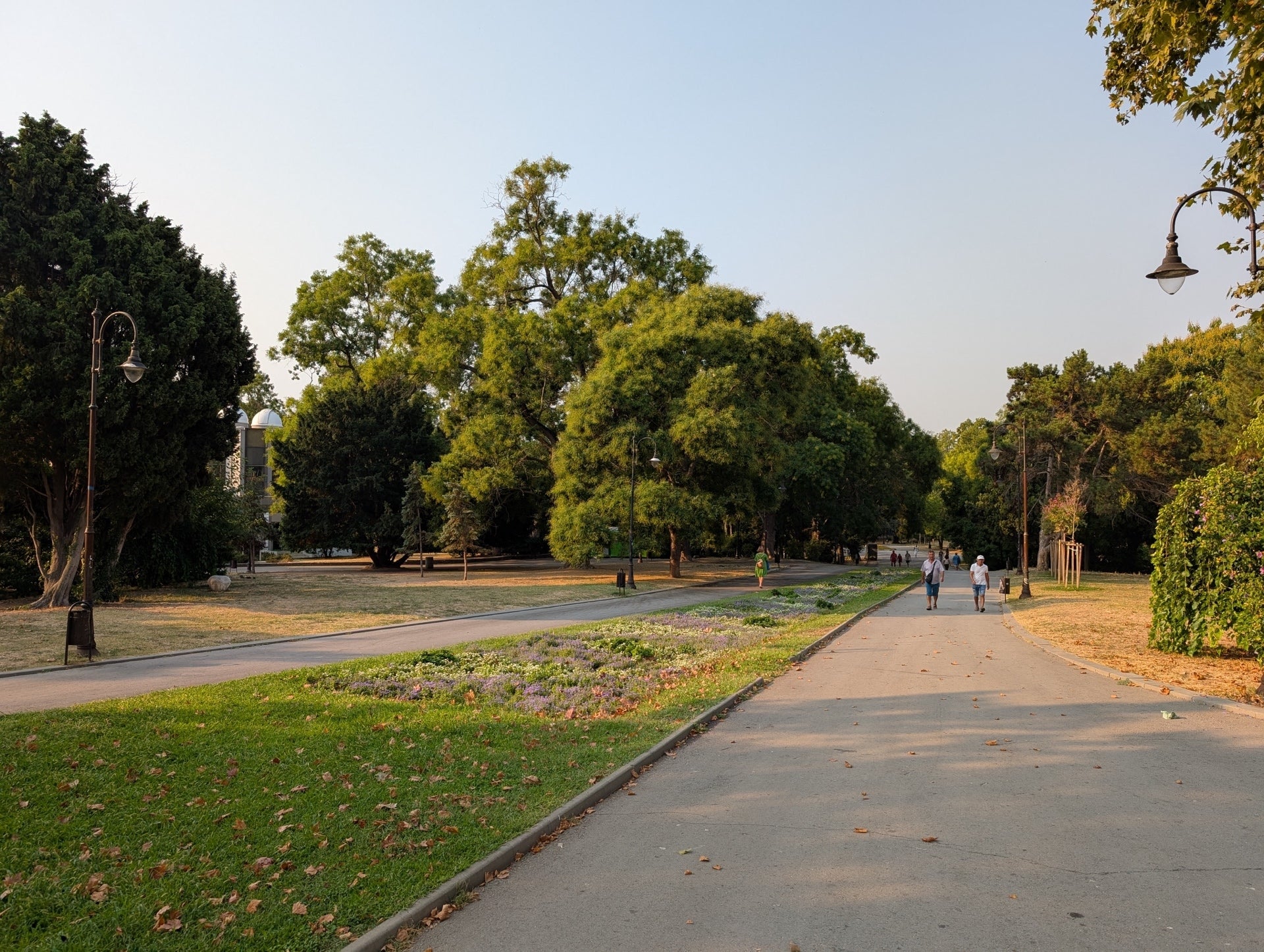
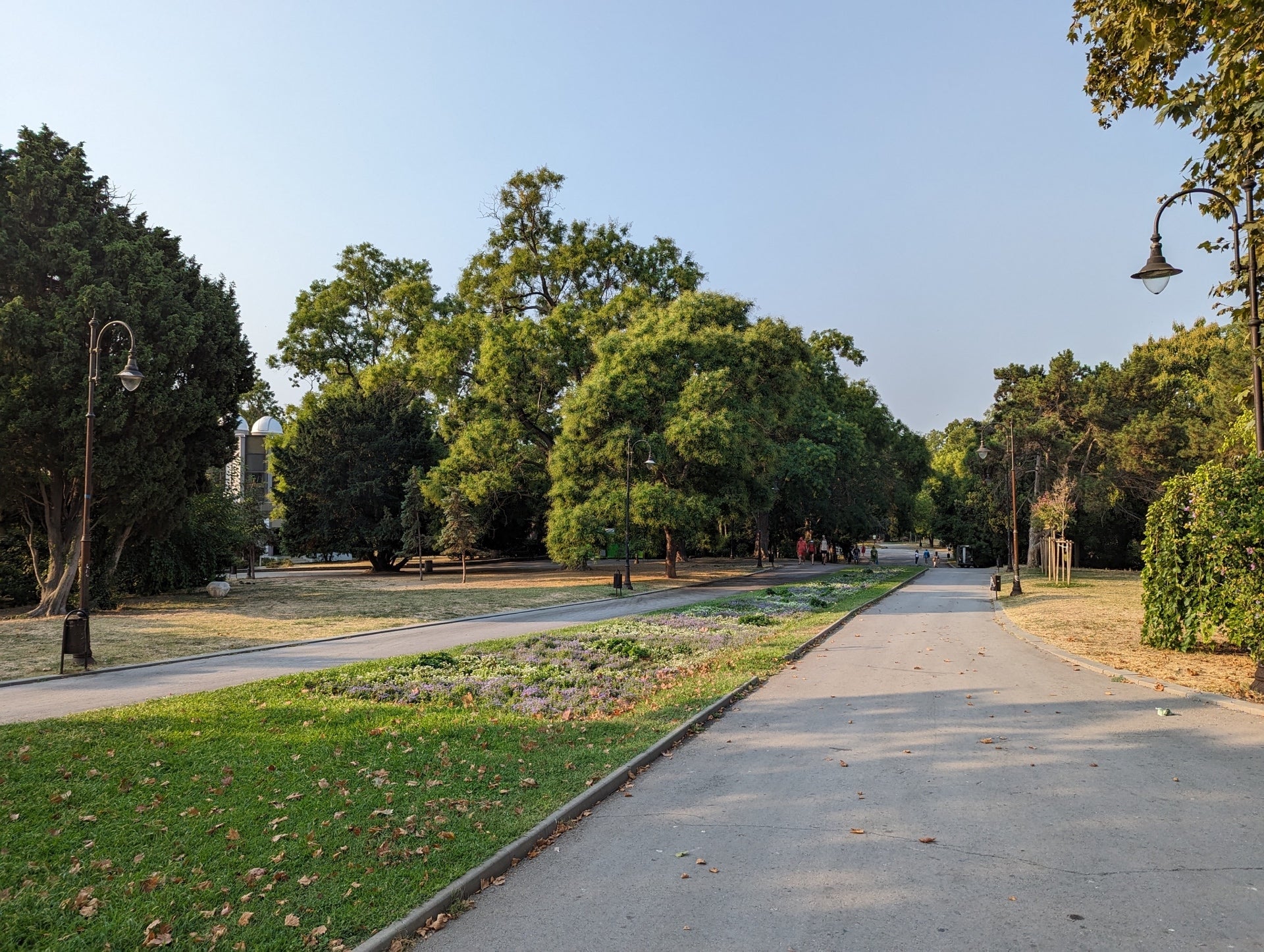


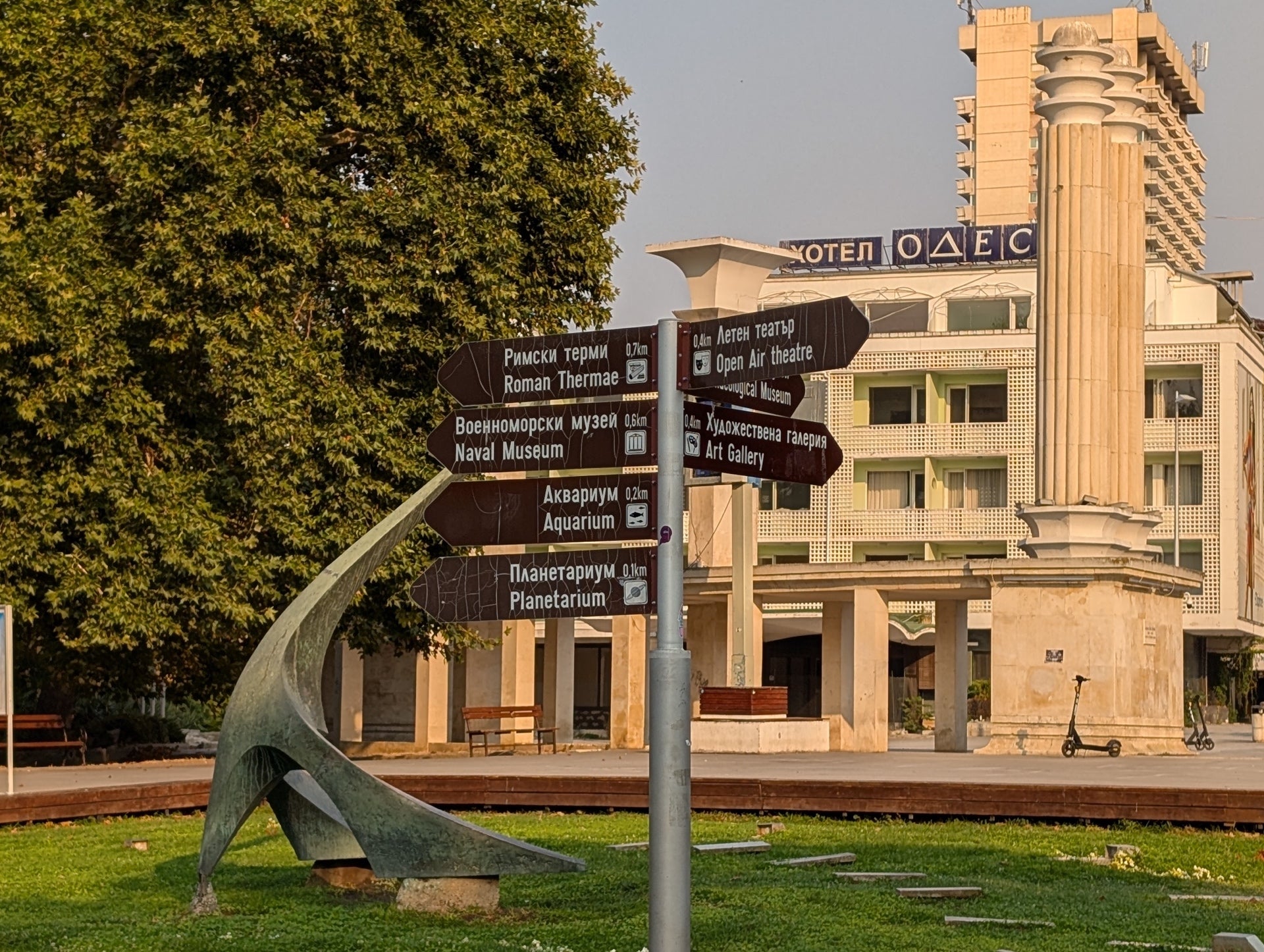






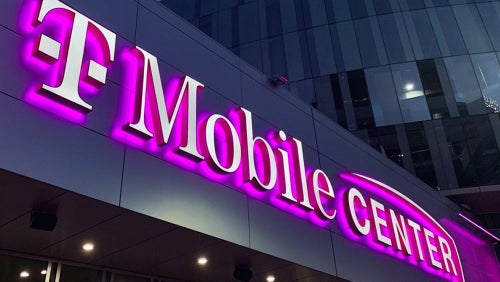
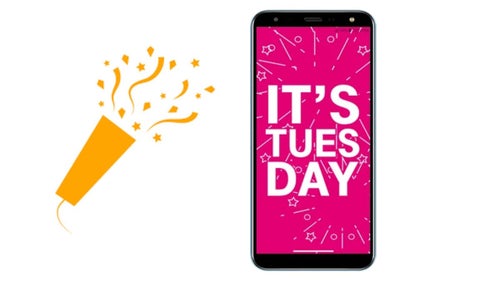

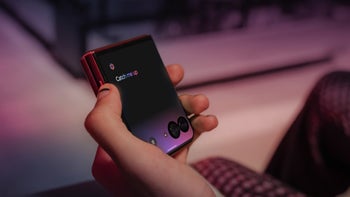
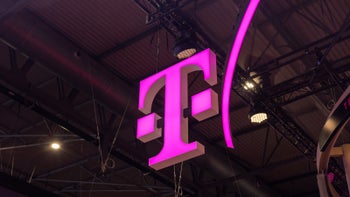
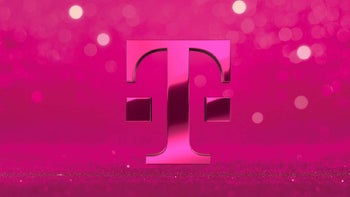

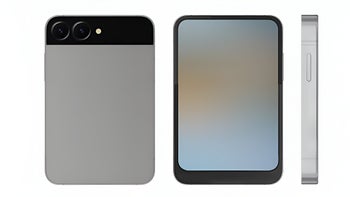







Things that are NOT allowed: